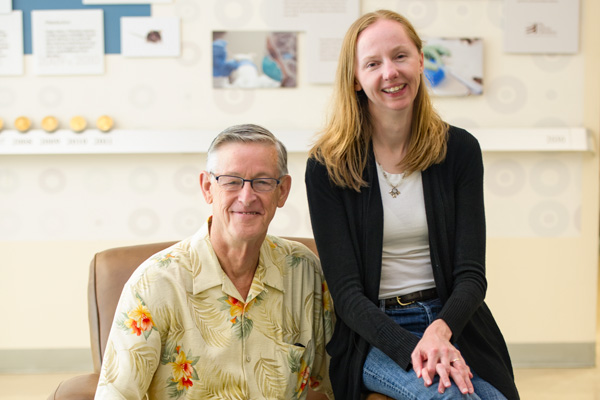
Understanding how healthy bones develop, and what goes wrong in osteoporosis and other disorders, is the goal of a new collaborative research project by Jackson Laboratory (JAX) and UConn scientists, funded by a new five-year, $3.2 million grant from the National Institute of Arthritis and Musculoskeletal and Skin Diseases, part of the National Institutes of Health.
The international research community is undertaking a massive project to “knock out” (delete) each gene in the mouse genome in order to systematically examine the function of that gene on the animal’s development and health. While the Knockout Mouse Project (KOMP) encompasses detailed physiological studies of the mice, a comprehensive examination of the skeleton – that vital mammalian scaffolding – was not included in the original list of biometric screenings.
The new project brings together a research team that will append a skeletal evaluation program to the ongoing KOMP. Cheryl Ackert-Bicknell, a Jackson Laboratory bone genetics expert, will work with Dr. David Rowe, professor of reconstructive sciences at the UConn Health Center’s School of Dental Medicine, Dong-Guk Shin, professor of bioinformatics in UConn’s Department of Computer Science and Engineering, and other JAX and UConn collaborators.
“It’s important to participate in this once-in-a-lifetime research effort to advance the understanding and treatment of osteoporosis and other genetically complex skeletal disease,” Rowe says.
“Osteoporosis hits half of all Americans over 50, regardless of gender,” Ackert-Bicknell notes, “and we know that family history is the best predictor of who’s going to develop osteoporosis. Up to 85 percent of the variance in bone density, which is what we measure in the clinic, is attributable to genetic factors.”
Rowe’s group will conduct the screening of JAX Mice, representing the mouse strains used in the KOMP, and Shin’s team of bioinformatics specialists in Storrs, will compile and analyze the data for Ackert-Bicknell and Rowe to mine for clues about how bone diseases progress through a lifetime.
Ackert-Bicknell notes, “Your skeleton changes constantly: every day your bones break down and build back up. What we’re trying to do in our study is to capture the ‘how and why’ this process becomes imbalanced, resulting in osteoporosis.”



